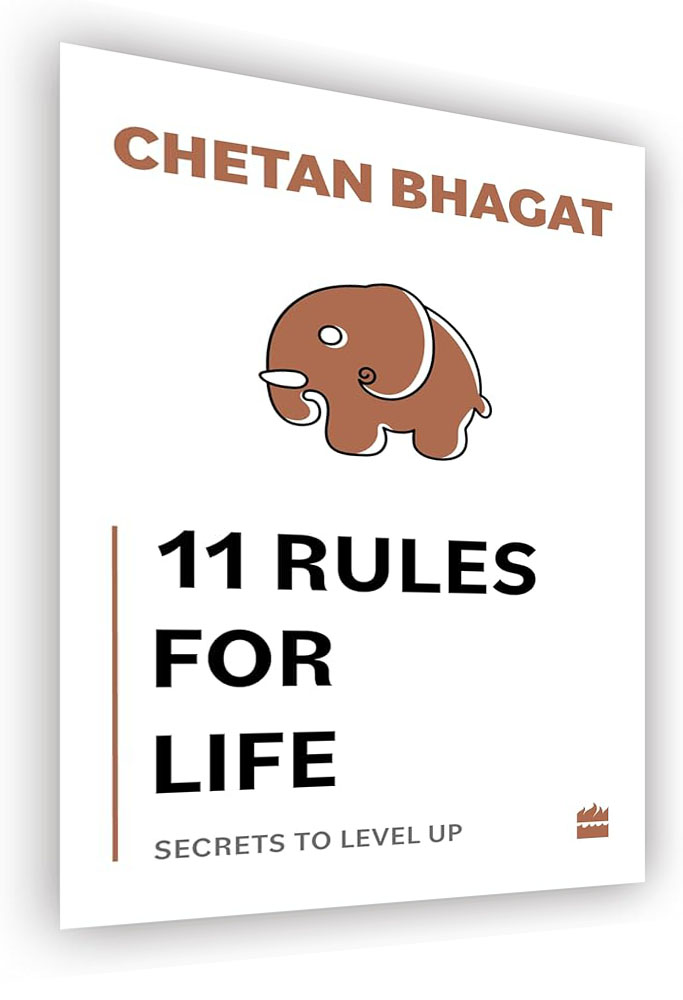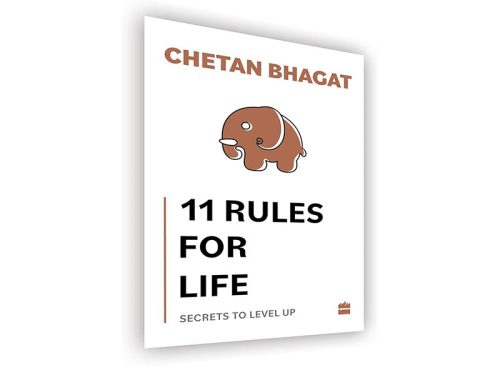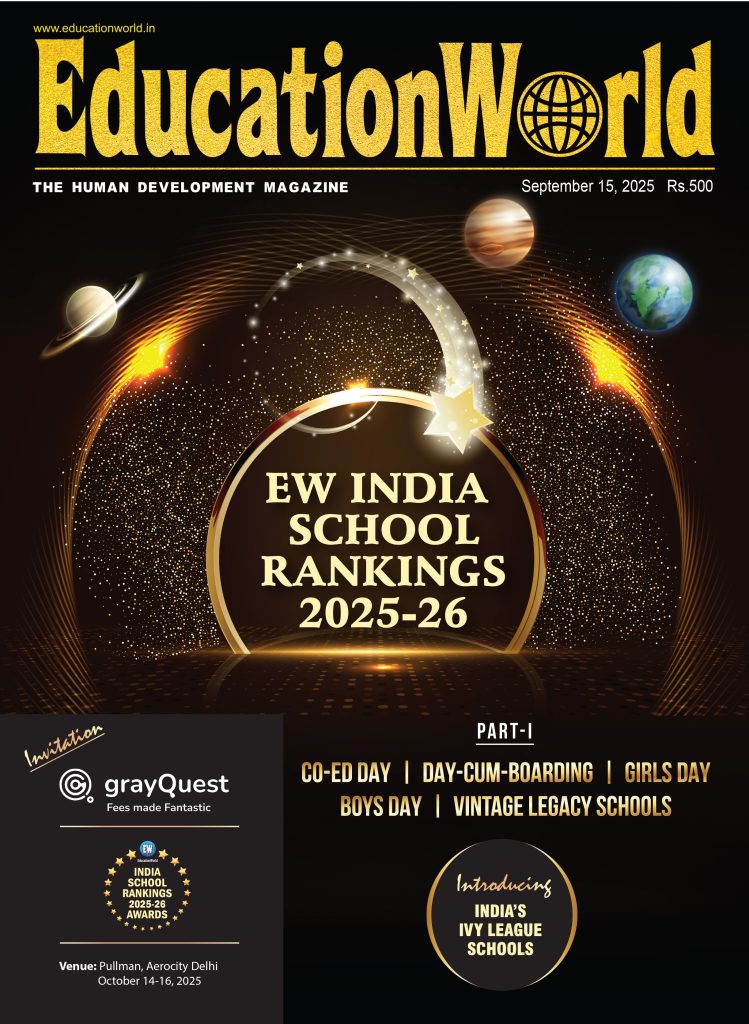Upward mobility prescription
 11 rules for life: Secrets to level up
11 rules for life: Secrets to level up
Chetan Bhagat
HarperCollins
Rs.250
Pages 226
By way of advice to an over-educated under-employed youth, the author provides a useful upward mobility prescription to ‘level up’ and succeed
Chetan Bhagat has all the qualifications of a heavyweight public intellectual. An alum of IIT-Delhi and IIM-Ahmedabad, a former banker with Goldman Sachs, and Deutsche Bank, he is also the author of five best-selling novels some of which have been adapted into hit Bollywood movies. Besides, he writes intelligent op-ed page essays in the Times of India.
Yet to an above-average intelligence reader, Bhagat’s novels are embarrassingly naïve and gauche. This is not a criticism of Bhagat from a failed novelist (Succession Derby, 1991). Bhagat is a widely read public intellectual with — as his essays on current events and social mores testify — socio-economic reform on his mind. On the contrary, it is criticism of India’s obsolete, and failing education system that churns out millions of under-educated youth and adults who need simpleton novels and matching Bollywood cinema. Bhagat can’t be blamed for the multiplication of the unthinking classes who love talk-down novels.
In 11 Rules for Life, Bhagat ventures into a new genre, combining his elementary story-telling skill with a life skills prescription for a Zomato delivery boy — an educated youth with a Masters in history who has been abandoned by his girl-friend for failing to get a better job. The prescription is delivered by way of advice to follow the 11 Rules prescribed by the author for the vast majority of educated under-employed youth like Viraj (a prototype of Bhagat’s core readers) to learn to “level up” and succeed.
Quite pragmatically, Bhagat advises readers to disregard fanciful propaganda about our wonderful world suffused with democratic and egalitarian ideals in which governments and people are ever ready to lend youth such as Viraj, a leg up.
According to the author, society, as shaped by post-independence India’s faux socialist-secularists, is pyramid shaped.
At the apex of the pyramid, there’s Class I, the elite 1 percent who own 90 percent of the country’s wealth. No matter what they say, they are content with the status quo and want to retain it. The next segment comprises 9 percent “elite protectors, and slave minders” typically doctors, lawyers, engineers, bankers, the bourgeoisie struggling to make it into Class I. The wide base of the pyramid is inhabited by “drones, workers and slaves” comprising the lower middle and working classes.
In the author’s perceptive analysis, each class has erected “iron gates” — rules, regulations and social norms and cultural mores — to make upward mobility from one class to the next near-impossible. “You are expected to remain in the area of your class mountain. Try to climb up and you will stumble against the iron gates,” says Bhagat, who as he often reminds us has successfully stormed the iron gate and made it into Class I with the New York Times proclaiming him as the “the biggest selling English language novelist in India’s history” and Time (USA) magazine listing him among the “100 most influential people in the world”. Hence his success prescription, essentially for Class III drones and slaves, shouldn’t be taken lightly. The prescription in the order presented by the author:
1. Never ignore your fitness. Himself a chubby and bullied kid in school, Bhagat accords top priority to good physical and mental health. In this chapter of 33 pages, he explains why maintaining good health is of utmost importance and that maintaining fitness is within every individual’s grasp — “it will help you build the ability to endure pain and give up pleasure, which is a phenomenal power in life”. The “three pillars of fitness” are adequate sleep, controlled diet and exercise. Multipoint prescription under each pillar.
2. Master your Emotions. In this chapter of 16 pages, after examining the various types of brains we are heir to ranging from 100 percent rational to 100 percent emotional, Bhagat advises developing a rational dominant brain. “The small percentage of people who can control their emotions end up (sic) ruling the world,” he says.
3. Put yourself First. “Live for yourself, not for others or to show others,” advises the author. But this isn’t advice to become selfish and greedy, writes Bhagat, providing an anecdote of how he “stopped being a people-pleaser”.
4. Master Simple English. Bhagat provides forthright advice to Class III slaves and drones to disregard the faux nationalism of ‘vernacs’ and learn to speak and write this language of business and commerce — and link language of the country — well. Or forget about jumping the Iron Gate into Class II. Even the poorest households, know this. Only politicians don’t.
5. Control cheap Dopamine. “Dopamine is the neurotransmitter that motivates your brain to seek more of whatever gives you pleasure.” Limit alcohol, junk food, video reels consumption, availing them in moderation. “The pleasure of the moment is the poison of the future,” warns Bhagat citing a Chinese proverb.
6. Chase the Hard Things. “Don’t avoid hard things (sic), instead chase them to make your grand visions and dreams come true”, i.e, adhere to advice rendered above.
7. Eat the Elephant. Learn to address big challenges by dividing them into small tasks.
8. Be the Cockroach. Survive by learning to adapt to every situation and environment.
9. Learn to Connect with People. Success is the outcome of effective networking with people of all types, shapes, sizes and temperament. You never know which connect will pay off.
10. It’s my Fault. Learn to take accountability for your acts of omission and commission, instead of blaming others and making excuses. Several good examples.
11. Earn, Save and Invest. People who don’t do this aren’t going to climb any iron gates. Beware of inflation, the silent dreams-killer.
The 11 Rules prescription provided in bits and pieces to the over-qualified food delivery boy, Viraj is not novel. But Bhagat has rendered a useful public service by consolidating this advice scattered in numerous self-help manuals and presenting it in this compendium.
However, the accompanying narrative reproducing conversations the author has with the hapless Viraj is corny and forced. But perhaps not for the reportedly 40 million unemployed, recklessly certified youth countrywide — the hapless victims of India’s sub-standard education system.
Dilip Thakore
Also read: Chetan Bhagat tweets his CBSE Class 10 mark sheet
















Add comment